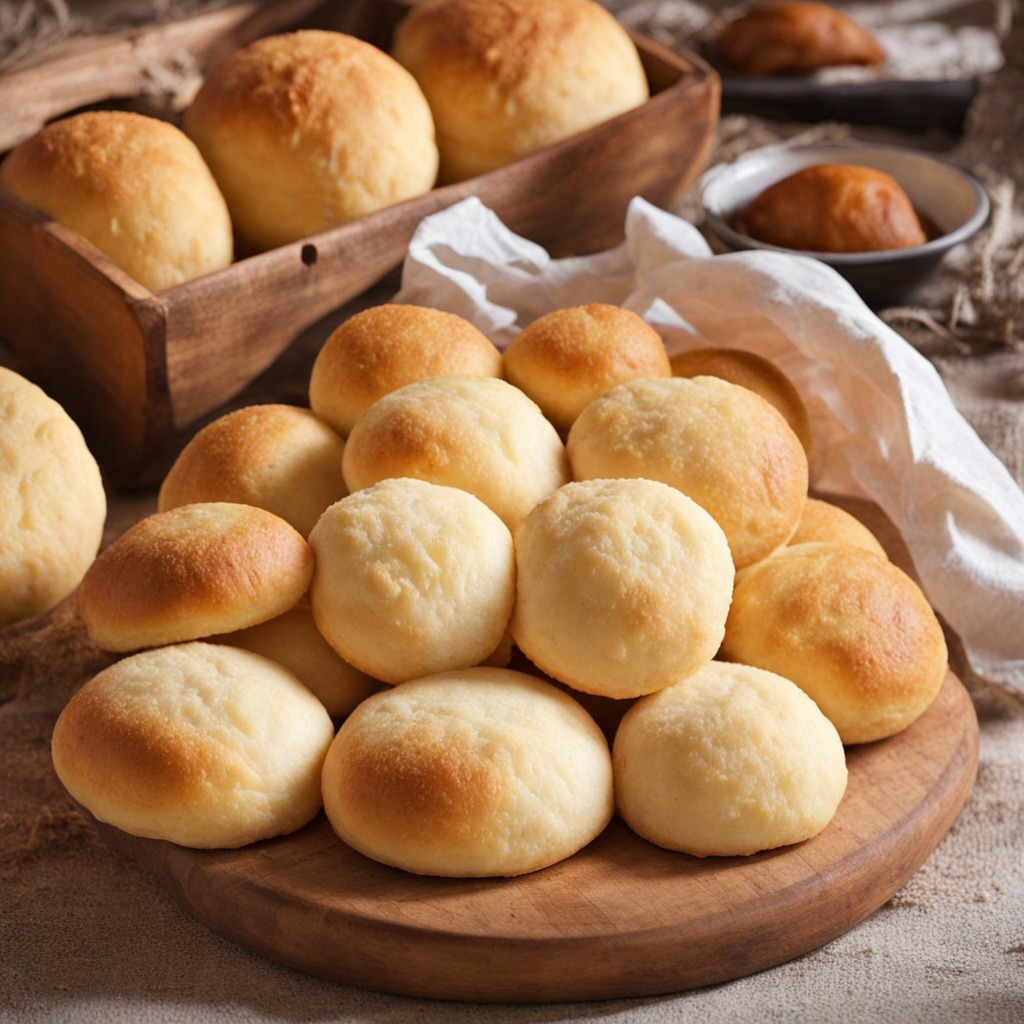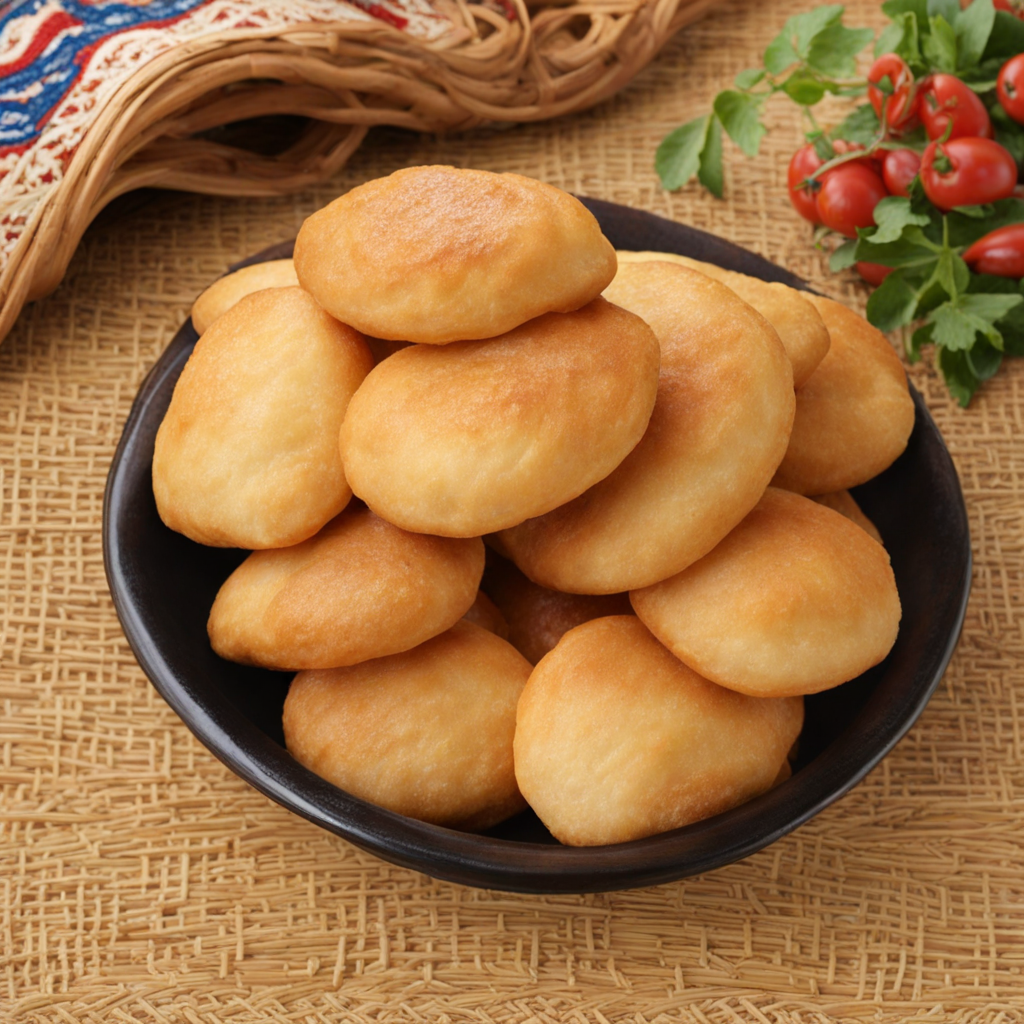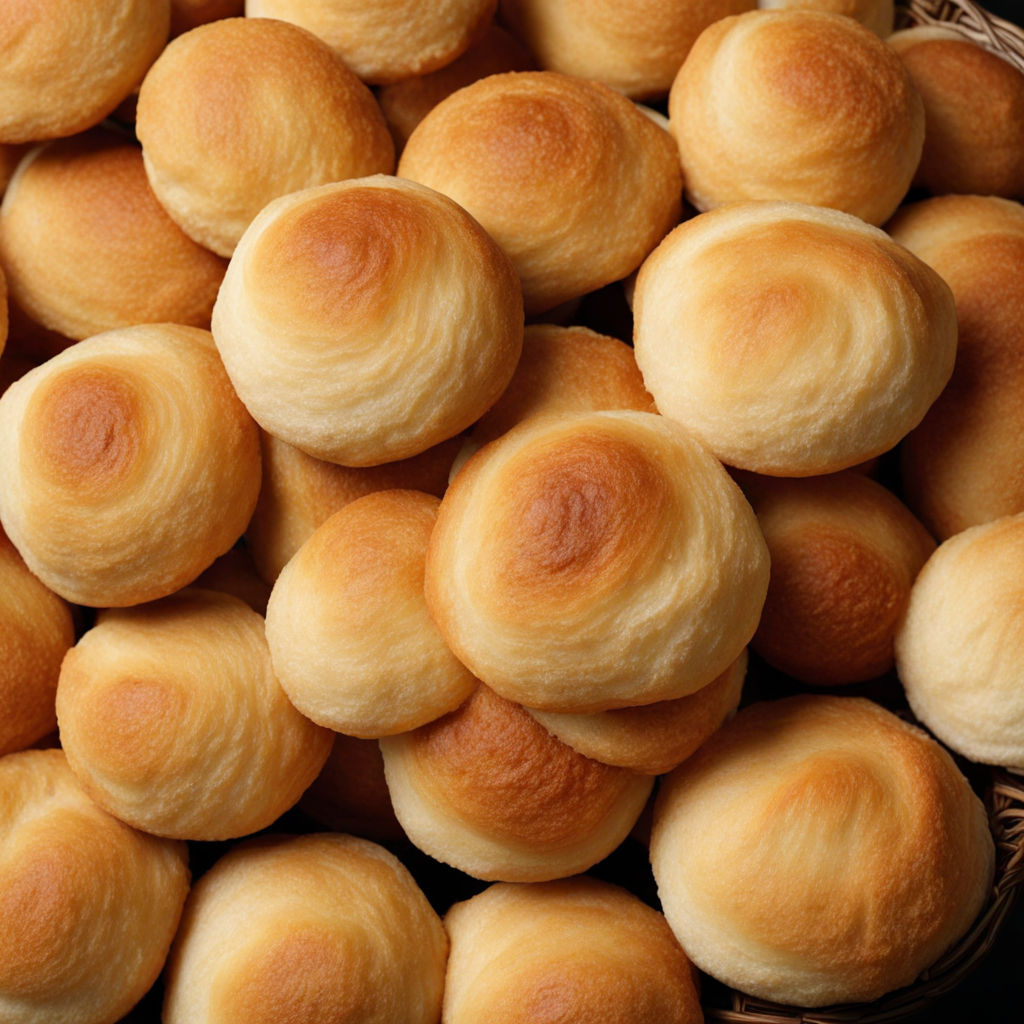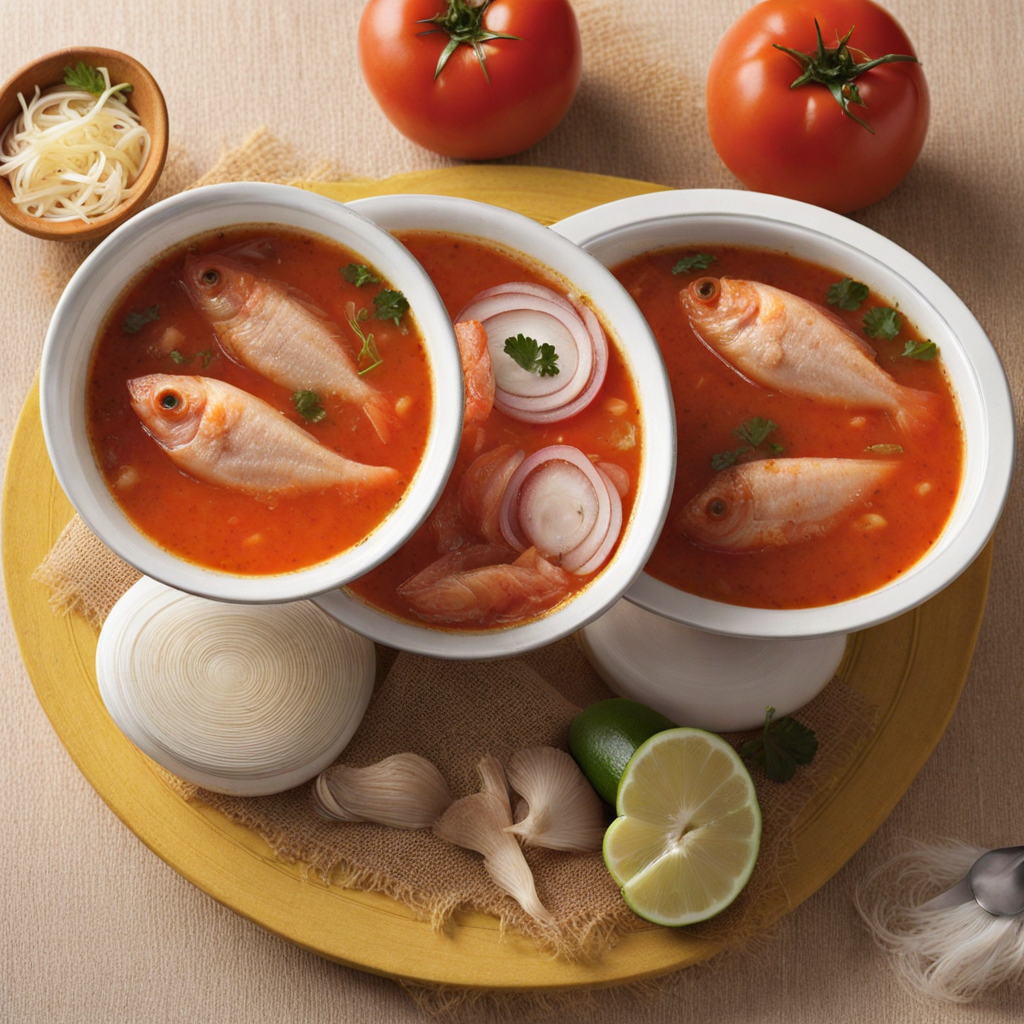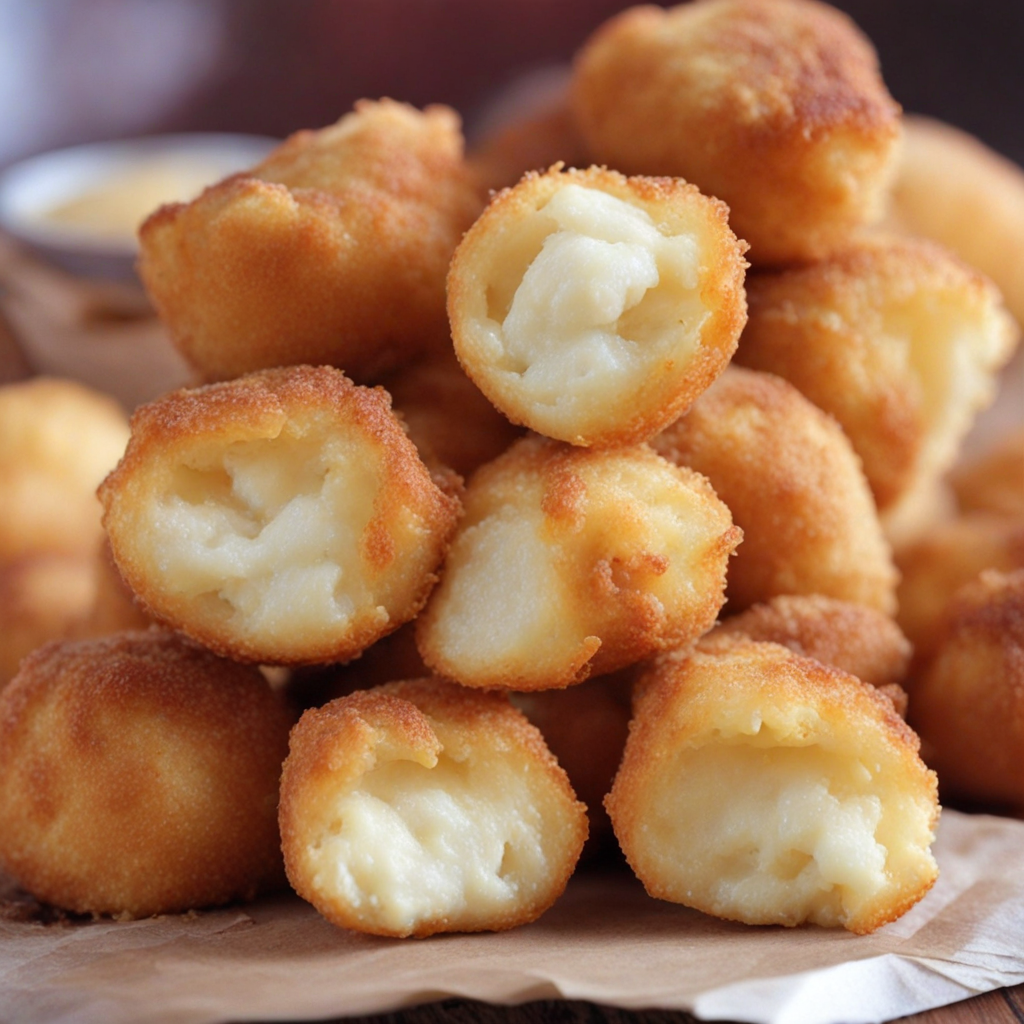Chipa
Chipa is a traditional Paraguayan snack that embodies the essence of the country's culinary heritage. This delightful cheese bread is made primarily from cassava flour, which gives it a unique texture that is both chewy and crispy. The dough is enriched with a generous amount of cheese, usually a local variety called Paraguayan cheese, which melts beautifully during baking, creating pockets of gooey goodness. The addition of eggs and milk enhances its richness, while a hint of anise or other spices can sometimes be found, adding a subtle aromatic note to each bite. Typically enjoyed warm, Chipa can be found in various shapes and sizes, from small, round bites to larger loaves. Its versatility makes it a popular choice for breakfast, snacks, or even as a side dish during meals. The golden-brown crust is inviting, and as you break into it, the soft, cheesy interior reveals itself, ready to tantalize your taste buds. The combination of flavors is comforting and familiar, yet the use of cassava flour lends a distinctively South American twist that sets it apart from other cheese breads found around the world. Chipa is more than just a snack; it is a cultural symbol in Paraguay, often made in homes and shared during gatherings and celebrations. Street vendors frequently offer freshly baked Chipa, filling the air with its mouthwatering aroma. Whether enjoyed on its own or paired with a cup of tereré, a traditional herbal drink, Chipa offers a taste of Paraguay that is both heartwarming and memorable, inviting food lovers to explore the rich culinary landscape of this vibrant country.
How It Became This Dish
The History of Chipa: A Culinary Gem of Paraguay Chipa, a delightful cheese bread, is one of the culinary cornerstones of Paraguay. This traditional snack not only tantalizes the taste buds but also carries deep cultural significance, reflecting the rich history and diverse influences that have shaped this South American nation. To fully appreciate chipa, one must delve into its origins, its evolution, and its role in Paraguayan society. #### Origins: Indigenous Roots and Spanish Influence The roots of chipa can be traced back to the indigenous Guarani people, who inhabited the region long before European colonization. The Guarani were skilled agriculturalists, cultivating crops such as maize and cassava, which formed the basis of their diet. Chipa is believed to have originated as a way to utilize cassava flour, a staple ingredient among the Guarani. This flour, mixed with cheese and other components, was baked into a bread-like form. The arrival of Spanish colonizers in the 16th century brought new ingredients and culinary techniques that would influence the development of chipa. The Spaniards introduced dairy products, notably cheese, which became a key ingredient in the recipe. The combination of indigenous ingredients and European influences produced a unique product that was distinctively Paraguayan. #### Cultural Significance: A Symbol of National Identity Chipa holds a special place in Paraguayan culture. It is not merely a snack; it is a symbol of national identity and community. Traditionally, chipa is enjoyed during festive occasions, family gatherings, and religious celebrations. It often accompanies the popular Paraguayan drink, tereré, a cold infusion made from yerba mate. In rural areas, chipa is often made at home and shared among family and friends, reinforcing community bonds. It is customary for families to pass down their own chipa recipes, which vary by region and family tradition. This act of sharing recipes and techniques reflects the communal spirit of Paraguayan culture. Chipa also has a significant religious connotation. During the celebrations of Holy Week, families prepare chipa to honor the occasion. Its round shape symbolizes eternity, making it a fitting food for such a solemn celebration. This connection between chipa and spirituality underscores its role in the social fabric of Paraguay. #### Development Over Time: Variations and Modernization As Paraguay has evolved, so too has chipa. Traditional recipes have adapted to incorporate local ingredients and modern tastes. While the classic version is made from cassava flour, cheese, and eggs, variations abound. Different regions of Paraguay have developed their own unique takes on chipa, resulting in a rich tapestry of flavors and textures. One popular variation is chipa so’o, which incorporates meat, typically beef or pork, into the dough. This addition transforms the simple snack into a more substantial meal, showcasing the adaptability of chipa to meet the needs and preferences of the people. Other variations include chipa guasu, a cornbread-like version, and chipa asador, which is prepared on a grill, adding a smoky flavor that enhances the experience. In recent years, chipa has gained popularity beyond Paraguay's borders. As the Paraguayan diaspora has spread across the globe, so too has the love for this traditional food. Restaurants and food stalls in major cities have embraced chipa, serving it to new audiences and introducing them to Paraguayan cuisine. This globalization of chipa has led to further experimentation with ingredients, with chefs incorporating international flavors and techniques while still honoring the traditional base. #### Chipa in the Modern Era: A Culinary Ambassador Today, chipa is more than just a traditional dish; it has become an ambassador of Paraguayan culture. Food festivals celebrating Paraguayan cuisine often feature chipa as a centerpiece, allowing both locals and tourists to experience this beloved snack. These events serve not only as a celebration of food but also as a means of cultural exchange, as visitors learn about the history and significance of chipa in Paraguayan society. In addition, the rise of social media has played a crucial role in the resurgence of interest in traditional foods like chipa. Food bloggers and influencers have taken to platforms like Instagram and TikTok to showcase their chipa-making processes, often adding personal twists to the recipes. This digital sharing has sparked renewed interest in traditional Paraguayan cuisine among younger generations, ensuring that chipa remains a relevant and cherished part of the culinary landscape. #### Conclusion: A Legacy of Flavor and Community Chipa is much more than a simple cheese bread; it is a vibrant representation of Paraguay's history, culture, and community. From its indigenous roots to its evolution through Spanish influence, chipa embodies the spirit of Paraguay, reflecting the resilience and creativity of its people. As it continues to adapt and thrive in the modern culinary world, chipa serves as a delicious reminder of the importance of food in forging connections and celebrating identity. In every bite of chipa, one can taste the stories of generations past and present. Its warm, cheesy goodness brings people together, fostering a sense of belonging and pride in Paraguayan heritage. As Paraguay moves forward, chipa will undoubtedly remain a cherished staple, bridging the gap between tradition and modernity, and ensuring that the flavors of Paraguay echo through time.
You may like
Discover local flavors from Paraguay


